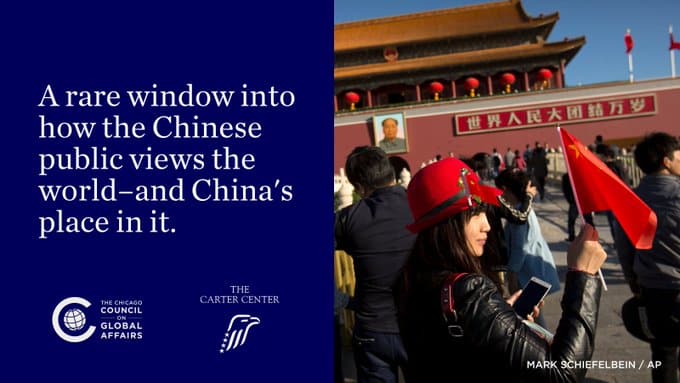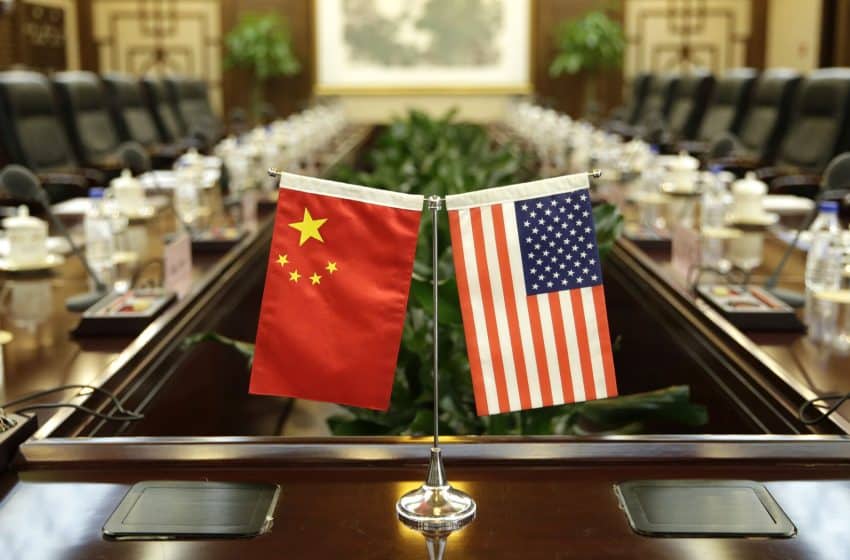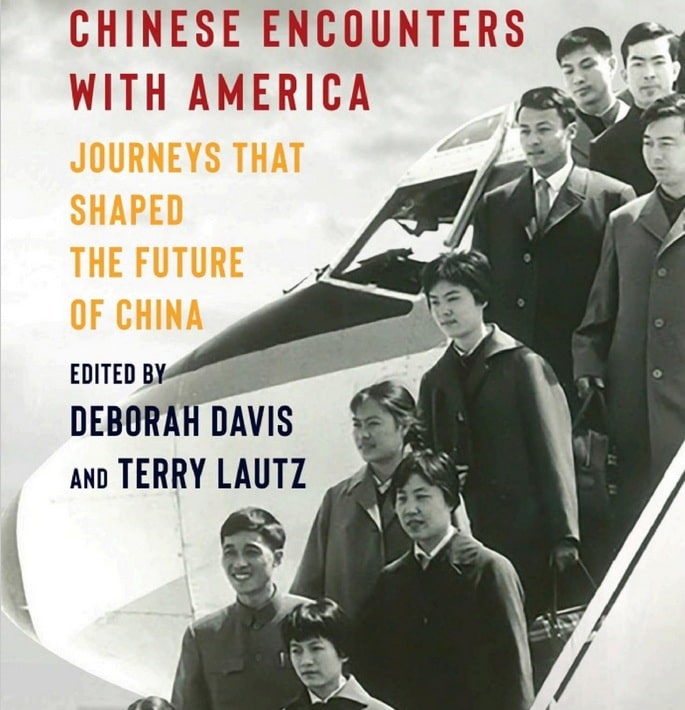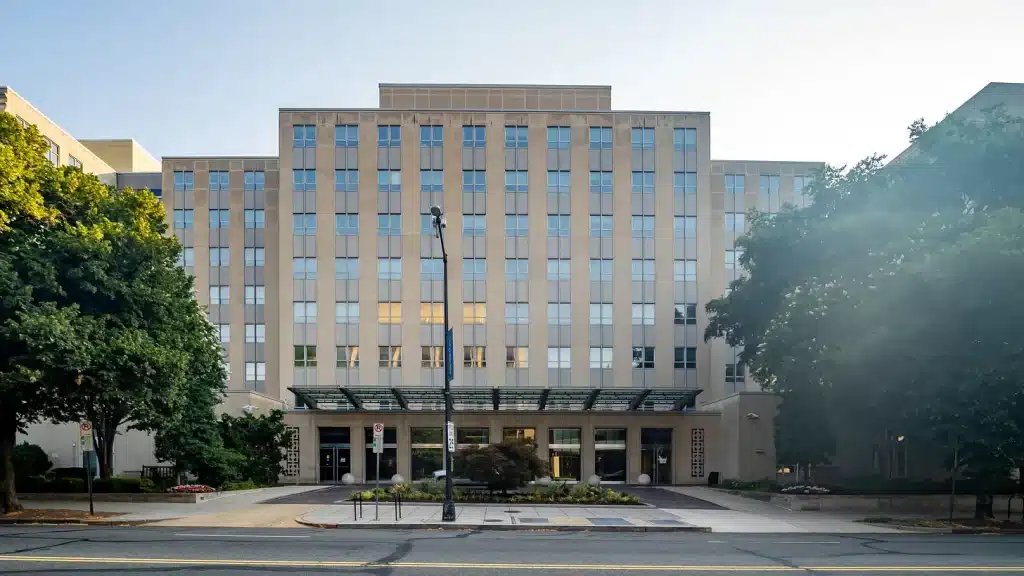An Interview with Denis Simon: The Past, Present, and Future of the U.S.-China Science and Technology Cooperation Agreement
- Interviews
 Olivia Moody
Olivia Moody- 02/08/2024
- 0
The U.S.- China Science and Technology Cooperation Agreement is an agreement initially signed in 1979 that serves as a blueprint for all cooperation between China and the U.S. in the fields of science and technology. This agreement has allowed Chinese and U.S. experts to work together in solving vital global issues, including the climate crisis and the Alzheimer’s epidemic, for over forty-five years. On February 27th, 2024, after six month extension by the Biden Administration in August, the bilateral agreement is set to expire.
Dr. Denis Simon, an American scholar who has studied and shaped the agreement since its initial signing, spoke to the U.S-China Perception Monitor about the agreement’s strengths, weaknesses, and impacts since 1979. Serving in roles such as Executive Vice Chancellor of Duke Kunshan University and Director of Penn State’s Program on U.S.-China Technology, Economic and Business Relations, Dr. Simon has both led and lived U.S.-China cooperation initiatives. He explains the possible actions the Biden administration can take in the next few weeks and warns of their consequences
Could you introduce your experience with science and technology exchanges between the United States and China?
My involvement with the US-China bilateral S&T relationship began in about 1980. I was working in Washington DC and did a lot of background research that went into the formulation of several of the original bilateral sub agreements. This experience exposed me to a wide array of areas of cooperation including management science, specifically, the U.S.-China management training center in Dalian, which unfortunately no longer exists. In 1984, I helped organize a major conference at the East-West Center in Honolulu with Professor Joyce Kallgren from UC Davis. This conference focused on educational, cultural, and science and technology exchanges. At that time, Professor Richard Suttmeier of the University of Oregon and myself also presented major papers about U.S. S&T cooperation, technology transfer, etc.
Since those early years, as the U.S.-China relationship grew, my involvement deepened. I have followed the meetings of the Joint Commission on Science and Technology, which happened every five years after the initial signing of the U.S.-China science and technology agreement (STA) in 1979, as well as several special initiatives. For example, I was a founding member of the US-China Innovation Dialogue. I participated in most of the formal and informal meetings and site visits up until 2017 and was an active member of the U.S. Experts Group; the respective American and Chinese Experts Groups served as a bridge between the US Office of Science and Technology Policy (OSTP) and China’s Ministry of Science and Technology.
At present, of course, I have been following and commenting on discussions about the S&T agreement’s future, including whether a new agreement will be signed by both countries. The U.S.-China STA was last renewed in 2018 during the Trump Administration, and it was due for renewal in August of 2023. A six-month hiatus was put in place to negotiate a new updated agreement; February 27th, 2024, is the new D-Day, as you might say, when a new S&T agreement is supposed to be issued.
The U.S. has over sixty bilateral STAs and two thousand sub agreements with other countries. What makes the U.S.-China STA unique?
What makes the U.S.-China STA special is that the bilateral relationship in this case continues to be very dynamic. China has gone from a developing country to a quasi-developed country in a very rapid amount of time. Whereas the relationship with China started off being very asymmetrical and quite hierarchical, today, most of the asymmetries are gone and the relationship is almost non-hierarchical. As a result, the whole basis of how the United States and China interact with one another needs to be revised. The U.S.-Israel S&T relationship, just to take one example, has always been a much more symmetrical relationship. There are some important fields where Israel has made progress faster than the U.S. and, therefore, the United States has and remains extremely interested in having our scientists and their scientists collaborate. I got first hand experience witnessing this type of cooperation as a prior board member of the US-Israel S&T Foundation. The same situation now exists between the US and China; for the first time, the concept of “mutual benefit” really has some meaning—real and potential.
I should point out, however, that the United States, in terms of its international S&T collaborative activities, has not always been the most stellar of performers. In 2022, the National Science and Technology Council (NSTC), which is part of the Office of Science and Technology Policy at the White House, issued a critical report on the structure, strategy, and quality of US international S&T cooperation.
What specific areas of the Office of Science and Technology Policy did the report critique?
The report made three main points. One, that the United States is missing many opportunities for collaboration and, therefore, is not taking full advantage of its international partner possibilities. Two, that US interests are not being fulfilled in many cases because we do not have good coordination inside the government to enact these cooperative protocols. And, third, that the talent pool that is responsible for engaging in S&T initiatives, those working in the State Department or in other federal agencies, do not have enough qualified scientists and engineers with policy experience to provide the overall expertise that is needed to make these agreements yield better result in terms of U.S. interests—political, economic, and scientific.
In the case of China, I would agree strongly with their points. I do not think the United States has gotten the most out of the relationship along the way because I am not sure that we have always had a fully competent team in place that understands both the political and S&T aspects of the relationship. We need to fortify the ranks of our government talent contingent to ensure better results for ourselves. We also need to think more strategically. I have often said that for the US cooperation with China in science and technology has been the icing on the cake, while for China, S&T engagement with the US has been the entire cake!
The US-China Science and Technology Agreement has been in place since 1979. How do you think the primary goals of the U.S. China STA agreement have evolved since then?
In 1979, when we signed the agreement, there was a basic philosophical orientation that guided U.S. policy, which was: “a stable, modernizing China is good for China, good for the U.S., and good for the world.” This orientation led to a proliferation of engagements with China, including a growing S&T relationship. Today, that policy orientation obviously has changed, and we hear things like ‘China is an existential threat to the well-being of the United States, and to the future prosperity of the United States’. That obvious transition away from what we were thinking in 1979, through much of the 1980s, and even into most of the 1990s, has produced a very different way of thinking about the value and utility of the S&T agreement, which is why it has been so hard to approach renewal.
On January 30th, for example, National Security Advisor Jake Sullivan was speaking at the Council on Foreign Relations and said that as the U.S. looks at stabilizing the bilateral relationship, we do not intend to go back to the formats of prior years. Instead, we intend to restructure and reshape some of the existing agreements so that they represent the state where relations are right now. In essence, this means we are looking at an entirely new set of issues, most of which were not envisioned back in 1979 and most of the 1980s—these new issues must be addressed and resolved for the S&T agreement to be reenacted.

What do you think are the most contentious issues for the US when considering signing a new STA with China right now?
In my view, there are three or four key issues that are on the negotiating agenda. First, which may seem a little bit surprising, is personal safety. China right now is categorized as a Level Three country by the U.S. State Department, which means ‘if you don’t have to go, don’t go’ due to the risk of detainment. If Americans want to engage in any kind of collaborative or cooperative activity with Chinese counterparts and go to China, they certainly want to be sure that they are guaranteed to be able to return when they want to, how they want to, and so on.
The second issue is the one that is all around us today: data. Data management and security was not a central issue way back when, but it has become a centerpiece of current discussions. When I talk about data, I mean data security, data access, and sharing of data. To be even more specific, with the enactment of China’s various security laws, there are concerns in the US that somebody will stumble upon some seemingly innocuous data, only to find out that it is controlled on the Chinese side and get themselves in trouble. This, again, shows why personal security is now such an issue of heightened concern.
The third issue is about reciprocity and access. Chinese visiting scholars and students who come to the United States have pretty much unencumbered access to academic resources, libraries, research materials and so on, including the Internet. Reciprocal access for U.S. researchers in China is contentious because the U.S. and China have very different legal systems and laws. These are areas where I am sure the negotiations will get very tough as the United States attempts to ensure a level of access and reciprocity that it believes is fair and reasonable.
The fourth issue is the issue of Intellectual Property Rights (IPR), which is a more longstanding issue. There was a protocol negotiated into the 2018 agreement renewal that expanded some of the coverage of IPR, but the IPR issue continues to linger as a source of concern. Therefore, any new agreement is going to have to pay special attention to this area.
What complicates the current negotiations is that the overarching bilateral S&T umbrella agreement previously involved only a few offices including China’s Ministry of Science and Technology and the U.S. Office of Science and Technology Policy at the White House along with the Office of Oceans, Environments, and Sciences in the State Department. Now, if a new STA takes on these new issues, particularly because they touch on the areas of data and security, a host of new players must suddenly be coordinated on the Chinese side. These include the Ministry of State Security, the Cybersecurity Administration, the Ministry of Public Security, among others. As a result, the Chinese side has a big task ahead of it and must bring on board enough support to make the changes that the United States would like to see. Of course, the Chinese side also has some requirements of the U.S. as well. I am sure they would like to see, for example, the scope of cooperation expanded. Right now, the U.S. favors a narrower agenda of fields: climate change, food security, global health, and clean energy as key areas. China probably would like to see other areas also covered. For example, the United States is interested in discussions about regulating and managing the use of artificial intelligence, but I am sure China would like to see possibilities for cooperation about the development of AI as a technology as well.
When we talk about whether the agreement will be renewed or fully restructured, it is important to look at the progress that has been made since it was last renewed. What progress do you think the STA has made?
We need to understand the basic function of the STA to answer that. The STA is an umbrella agreement which basically implies a blessing: that both governments support the idea of expanding bilateral S&T cooperation and exchanges. However, in 2018, when the agreement was last renewed, it was renewed under the cover of darkness, without much fanfare, and without the usual vice ministers or higher ups signing the agreement ceremoniously. Since it was hidden in some ways, it became difficult for expanded cooperation to move forward.
Why? First, unfortunately we have had programs like the Department of Justice’s China Initiative which cast suspicion on many Chinese American scholars, many of whom were from the PRC, for allegedly engaging in the nefarious transfer of controlled knowledge and information. In almost every case, however, it was shown that there was no espionage or spying. Nonetheless, the effect of this probe, where many people were wrongly held in suspicion, put a damper on cooperation.
As you might know in August of 2023, I resigned from the University of North Carolina, precisely because I was told that the university did not welcome Chinese diplomats to come on campus, even if their purpose was innocuous, to discuss bilateral relations unless I received high level approval from the provost Office. I have been having Chinese officials on my campuses since I have been in academia, starting in 1983! Despite plans to have the discussion with no photos, no recordings, and no public exposure in the Business School, I was admonished for doing it. I found that to be unacceptable and resigned because of it. In the same vein, we were not allowed to take U.S. students and other international students to China. All these things can be chalked up to one thing: universities have been made to believe it is their job to protect the national security interests and research activity of the United States. And a lot of public universities specifically, take the same position as UNC at Chapel Hill did which is reluctance to encourage either re-engagement or the startup of new projects with China. At the same time, many US experts in the scientific community are anxious to renew their collaboration with China, particularly because Chinese capabilities have moved forward.
This period of near-dormancy between 2018 and 2023 is unfortunate, because it has not allowed things to move along the way they were before COVID-19 came about. In 2019, you could say that U.S.-Chinese collaboration was the leading dyad for bilateral collaboration in the international scientific community; the collaboration produced more joint publications and got more citations than any other bilateral partnership. In other words, it was a fruitful collaboration between the two countries. To distance ourselves from China at this point, seems to me suboptimal and not incredibly wise for us. I have likened it to driving off a cliff and knowing full well that we are at the edge of the cliff. In other words, we will be damaged if we somehow think that delinking from China is going to be beneficial to our own scientific and technological progress.
Do you think concerns about China’s responsibility for, and reaction to the pandemic, has affected attitudes about a possible STA renewal?
I think among some people, for sure. I think there continues to be lingering suspicions that there was a leak that occurred, and that the Chinese did not report it to the various international agencies in time. I was at DKU in January 2020 and our partner in that joint venture is Wuhan University. We had a lot of people working there who are from Wuhan, and it was a very disconcerting moment for many of us, because we were operating in the dark. We tried to get information from the U.S. side, the local level PRC government, as well as the national government in China. Despite this, we were left without adequate information and operating in a situation where perhaps the most extreme reaction was often the one that ended up being the most appropriate.
You might be surprised to know, however, that during the initial period of Covid, U.S.-China collaboration about Covid was actually on the rise. We were doing well until there were elements put in place that made it difficult for us to continue to go forward. This included, for instance, government restrictions on the Chinese side and travel restrictions that had to be put in place on the U.S. side. Frankly, I understand why there was a fearful response to China with all the uncertainty after Covid especially as our own country did not do a particularly stellar job of responding to the virus. There are still some people who think that the fault lies with the Chinese side, and therefore they are hesitant to re-engage, but that is getting to be a smaller portion of our scientific community. I think those who have worked with counterparts on the Chinese side and have built relationships understand some of the challenges of working in the Chinese system. Even more so, they understand that there is a great upside benefit to come from collaboration.
Overall, you are right, if there is a sea change moment, or an “a-ha moment,” that has affected the bilateral S&T cooperative relationship, it has been Covid and its lingering effects. With this said, I think that it also has been a time for learning. I think both sides have realized we suffered tremendously by not talking to one another in an open, honest way. My hope is that we can put in place a set of norms and values for the future and that transparency is the name of the game. Were there be any other crises like this to emerge again, I hope that our two nations could work together in a more productive way, and therefore prevent the unnecessary deaths of Chinese and American citizens.
As you mentioned, the U.S.-China STA is set to expire on February 27th. What do you think will happen with the U.S-China STA in the next few weeks.
Let me get my crystal ball out and see what is going to happen. I will start with what I know up to now. First, I understand that there have been two meetings in which the US and China have discussed establishing something called fundamental principles. These fundamental principles will be a guide of how the two countries will cooperate, including treatment of each other’s personnel and a commitment to work together in an honest, open, and transparent way. In other words, the fundamental principles will set in place the overarching rules of the road as part of a new roadmap for the future of collaboration.
When the decision was made in August of 2023 to extend the agreement’s expiration for six months, both sides said they did not want a repeat of the last time, when it was extended four or five separate times before it finally got signed. This time they were hoping to get a deal done early but ended up coming into the American Thanksgiving holiday, the Christmas holiday and now, Chinese New Year. It is my understanding that a Chinese delegation came to the United States before Chinese New Year, which means that they remain engaged and hopefully on a path to arrive at a new agreement.
As I mentioned previously, I believe that the issues surrounding data have become the central focus around which the discussions are continuing and represent the most sensitive area that will make or break any new deal. There is no possibility for engaging in any kind of meaningful collaboration unless we iron out beforehand how both sides are going to treat access or restrict data in the future. The two sides also need to discuss who owns the data created in research initiatives at the time of their completion. To be clear, I do not think the U.S. is arguing that we must have access to controlled materials. Rather, the US wants to discuss explicitly what is doable and what is not doable. It is especially important to have clarity in research collaboration to know before you go what you will have access to and what kind of materials the scientists are going to be able to take back home.
More broadly speaking, I do find it interesting that when Ambassador Burns was asked at the Council of Foreign Relations about the STA, he was not very committal. He said he wants to be hopeful; he is also realistic. Specifically, he said there were several national security challenges associated with it. Frankly, I was not particularly enamored by his comment because it did not show total support for the renewal. I do believe, though, that if you asked him offline, he would tell you: ‘Yes, we want all types of collaboration in education, scholarly exchanges, collaborative research to go forward.’ This is because the two countries like to and should continue to work together. If you look at bilateral relations between 1979 and today, science, technology, and educational exchanges have been bedrock elements; even in times of political difficulty, these ties have been able to be sustained. Even when the two governments may not get along, people to people diplomacy has been a key element for helping to support the longer-term trajectory of the cooperation between our two countries.
Before, when the relationship was very hierarchical, the flow of knowledge largely was one way. The U.S. was teacher, China was student, but that kind of situation has disappeared in almost every area. The fact that the United States, now, is talking about de-linking from China, or de-risking, a popular word right now, when China has something meaningful to offer us is ironic. A new version of the S&T agreement in which there was a shared vision could yield a one plus one equals three outcome; a synergy in which both countries could benefit. Not to mention, I do not know of any global challenge problem, including climate change, global pandemics, etc., that can be solved in any kind of meaningful way without the direct cooperation and collaboration between the U.S. and China. I am hoping that wiser minds will prevail and that we will find a will and a way to get to a new agreement even though it is hard to imagine one emerging by February 27th.
What do you think will happen if the U.S.-China Science and Technology Agreement is not renewed?
As one can envision, if an agreement is not reached, that a lot of scholars, particularly those university affiliated, are going to be reluctant to travel in either direction, because they will feel that they do not have the “umbrella of coverage and support” from their respective governments. The idea that this umbrella-like agreement provides a sense of security and support is the reason we want it to be signed. While there was not a huge amount of money provided under the bilateral accords, each government did provide some funding to support the various new initiatives under the STA and, without this agreement, it will be even harder to find available funding for bilateral initiatives.
We are at a difficult point, no doubt, and things are made even more difficult by the onset of the US presidential election. The election being what it is, and the cantankerous nature of the discussions between both major political parties, means that President Biden now, as the person in the White House, wants to be very careful that he does not leave the impression that he has given away the store to the Chinese side. Yet, on the other hand, he apparently does not want to throw away the opportunity to continue the STA. He must find a fine line between pleasing both Republicans and Democrats right now. The irony of this whole situation is, of course, that while there are very few issues around which Democrats and Republicans agree, imposing tighter controls in terms of our science and technology relationship with China is one of them.
With all this said, I think the letter that came out from Stanford University, signed by over a thousand professors, including myself, indicates that there is strong support for continuing to move ahead with a new STA across our scientific community. My discussions with friends from the Chinese Academy of Sciences and several top Chinese universities and think tanks indicate there is really strong support for a renewal of the STA on the China side as well. Whether it is in Shanghai or in Washington, we need to make people feel safe and secure if they are going to engage in science and technology collaboration, and that it is incumbent upon both governments to provide that sense of safety and security. I think that is where we are right now. So, let us keep our fingers crossed for a good outcome come February 27th.







